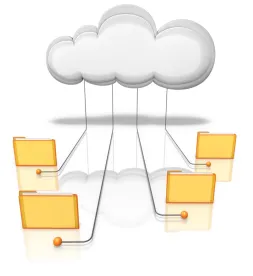In today’s world, it seems that virtually every business is using or offering some degree of online services. If you’re involved in making technology purchasing decisions for your business, you likely receive numerous requests related to purchasing hosted services, though the nuances of what a hosted service is and the particular legal considerations such a purchase raises may still be hazy concepts. If this resonates with you, you are not alone – even the most tech-savvy users can be left confused in this ever-evolving industry. To assist you in responding rapidly to these requests, we have pulled together a two-part series containing a quick reference guide of basics and top 5 considerations for purchasers of hosted solutions. Welcome to part 1 of this series, Hosting 101: The Basics.
 What is a hosted service? The term “hosted service” is used to refer to a product or service powered by information technology resources that you do not own or control. Users are provided with access to the product or service without the need to purchase and maintain the necessary software,hardware, server space and other logistical and technical resources. You may run into hosted services that are provided on a dedicated server owned by the provider, but today, more often than not, hosted services are provided via the cloud.
What is a hosted service? The term “hosted service” is used to refer to a product or service powered by information technology resources that you do not own or control. Users are provided with access to the product or service without the need to purchase and maintain the necessary software,hardware, server space and other logistical and technical resources. You may run into hosted services that are provided on a dedicated server owned by the provider, but today, more often than not, hosted services are provided via the cloud.
What is “the cloud” anyway? The cloud is really just a metaphor for the Internet, and the term“cloud computing” is used to refer to information technology resources provided over the Internet. Accordingly, “cloud services” means hosted services provided through the Internet. Still confused?
 Why is the cloud so hot? The most frequently cited advantages of the cloud are cost, scalability and agility. Traditionally, operation of software required storage of a physical copy of each software product locally, on a server owned by the customer (known as on-premise). However, operating and maintaining a copy of each software program locally requires costly infrastructure and expertise. Cloud computing allows technology providers to offer software and all the necessary accompanying resources, infrastructure and expertise at a centralized location, which may be accessed by multiple users. The result is access to software, hardware and other information technology resources at lower cost (although, some debate its cost-effectiveness), in a manner that allows individual businesses to scale their use quickly, and that provides for rapid deployment of updates and upgrades.
Why is the cloud so hot? The most frequently cited advantages of the cloud are cost, scalability and agility. Traditionally, operation of software required storage of a physical copy of each software product locally, on a server owned by the customer (known as on-premise). However, operating and maintaining a copy of each software program locally requires costly infrastructure and expertise. Cloud computing allows technology providers to offer software and all the necessary accompanying resources, infrastructure and expertise at a centralized location, which may be accessed by multiple users. The result is access to software, hardware and other information technology resources at lower cost (although, some debate its cost-effectiveness), in a manner that allows individual businesses to scale their use quickly, and that provides for rapid deployment of updates and upgrades.

SaaS… PaaS… IaaS… What do they mean and why should you care? These terms are used to refer to varying levels of hosted services. Think of these concepts in layers: The most basic layer isSaaS (shorthand for Software-as-a-Service), which refers to individual applications provided on a hosted basis. PaaS (shorthand for Platform-as-a-Service) affords a user the infrastructure to develop and run multiple applications over the internet. Take Salesforce.com as an example: Salesforce.com’s client relationship management tool alone is a SaaS product, while Salesforce.com also offers users a PaaS product, which provides the ability to develop, deploy and connect multiple applications. IaaS(shorthand for Infrastructure-as-a-Service) offers storage, network and computing power on a remote basis. Amazon Web Services was one of the first mainstream providers to jump into the IaaS space, but you’ll also recognize many of these IaaS providers.



 />i
/>i

